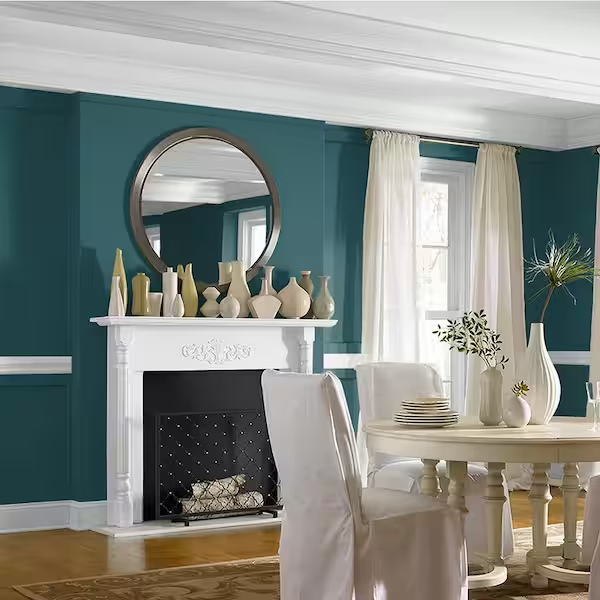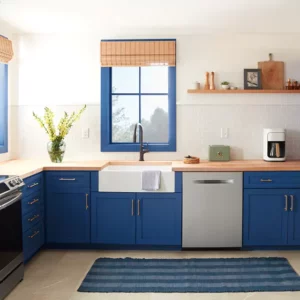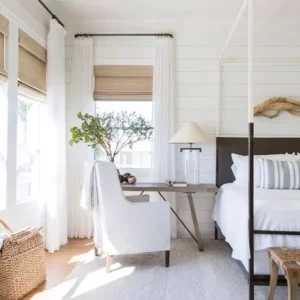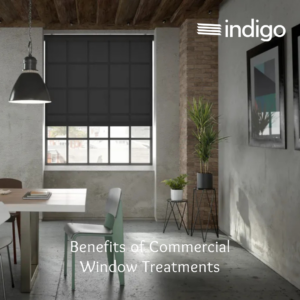Where Do I Start?
Set aside style considerations for a moment; function comes first with curtains and will limit your choices, in a good way. If you want treatments that provide privacy or total darkness, you need lined curtains. If you’re OK with light filtering through or if your curtains are simply decorative, unlined will work.
Lining is more expensive but has other advantages: It can shield fabric from sun damage, making curtains last longer. A lining also adds heft, which protects against drafts and helps fabric fall more luxuriously. For maximum durability, light blockage, body, and insulation, you can get curtains with an interlining, too—a layer of flannel-like fabric sewn between the lining and the “face” fabric. This is a common option for custom-made curtains but not widely available in less expensive ready-made panels.

What About Fabric and Color?
Texture: Consider the mood of the room. For a formal space, there’s heavy silk or velvet (a great insulator); both are dry-clean only. More practical (often washable) options include silky rayon blends and cotton sateen. For a casual feel, there are billowy linen (generally dry-clean only) and crinkly crushed velvet. Cotton and cotton blends work with any type of decor and bring a crisp, neat feel, as does seasonless wool or wool blends.
Colour: You’ll need to decide if you want the curtains to blend with the decor or to pop. For blending, pick curtains that are the same tone as the wall but a few shades darker, or choose a non-dominant subtle colour in the room (a soft shade from the rug, say). A bold colour will work like an exclamation point (if you’re looking to add some wow). Also keep in mind that in a space where the sun shines through unlined curtains, the colour will infuse the room. Blue can be eerie; pink, cheery.
Prints and Patterns, A rule of thumb: If you have patterned furniture or bedding (or a very elaborate rug), stick with solid curtains. If you have solid-colour furniture or bedding, consider patterned curtains. For a subtle hit of style and energy, go for a small, neutral print, like dots or paisley, which reads like texture from afar. A large, graphic print in a colour that relates to the existing decor is daring but can be spectacular.
How Long Should Curtains Be?
Floor-length is the way to go, unless there’s a radiator or a deep sill in the way. Ready-made panels are available in lengths from 63 to 144 inches. Measure from the floor to where you’ll hang the rod, then round up. You can always have the dry cleaner hem them a bit if needed. You’ll get the most current look if the fabric makes contact with the floor (or sill or radiator). Too-short curtains can seem nerdy and off, like high-waters. Here are two surefire approaches.
1. Just Hitting the Floor or Sill: This look is classic and tailored; it makes sense if you’ll be opening and closing the curtains a lot (they’ll easily fall back into place every time you move them). The fabric should just touch the floor or hover half an inch above. This is also a great approach for café curtains (short panels that cover only the lower portion of a window and hit the sill), which work well in spots like the kitchen and bathroom, where long drapes aren’t practical.
2. Breaking Slightly at the Floor: Panels that extend onto the floor by one to three inches are the most stylish right now. They’re more relaxed than those that graze the floor (left), but they still feel tailored—think of a pair of dress trousers. If you have uneven floors or are worried about precision measuring, this style is more forgiving. In formal rooms, an exaggerated take—six or so inches of fabric pooling on the floor—can look romantic but is also high-maintenance; curtains need refluffing every time you vacuum or the cat lies on them.
How Wide Should Curtains Be?
To ensure that panels look ample and drapey when closed, they should have a combined width that is 2 to 2½ times the width of the window. Exceptions: If you’re hanging curtains just to frame a window and don’t intend to shut them, you can round down to 1½ times the width. Pleated panels have fullness built in, so their width should more or less match the span you’re covering.
Where Should They Be Mounted In Relation to the Window?
Generally, hanging curtain brackets on the wall above and outside the window molding looks best; it allows fabric to fall gracefully. If you have detailed window frames you don’t want to cover, an inside mount (hanging curtains within the frame, as you would with a tension rod) can work. Below are two hanging tricks that decorators love for maximizing windows—you can opt for just one technique or use both on the same window.
1. Hang Above the Frame: To create the illusion of a taller window, mount the rod four to six inches above the window frame—or halfway between the frame and the ceiling molding. (But within reason—don’t go more than eight inches above the frame or it might look awkward.) A track mounted on the ceiling also lengthens windows. Be sure to account for the extra fabric when measuring.
2. Hang Wider Than the Frame: Extending the rod three to six inches beyond the frame on each side makes a window feel grander and allows extra light to stream in when the curtains are open (the fabric hangs against the wall without blocking the glass). You can also use this plan to reveal pretty molding. In this case, you may want to leave as much as 12 inches on either side. Remember to adjust your width measurements for this look.
What About the Top?
The top hem of a curtain, known as the heading, can help define the overall look—casual or formal, feminine or sleek—and also play a part in functionality (allowing the panel to slide easily or not). Here’s a quick rundown of common options.
1. Basic Heading, With Hooks: A traditional flat heading that attaches to the rod via rings stitched into its top hem or, sometimes, drapery hooks (the rings attach to the hooks). With either setup, the curtains move easily.
2. Rod-Pocket Heading: A channel along the top holds the rod and creates a casual, gathered effect. A nice choice for curtains that will stay put, because shimmying the fabric back and forth can be difficult.
3. Pleated Heading: There are many styles, from narrow pencil pleats to wide, flat box pleats. Because they’re structured, these panels read more formal than do other types. Pleated curtains generally operate with drapery hooks and rings.
4. Tab-Top Heading: Flat loops of fabric hang on the rod. This can look relaxed with sheers or buttoned-up with stiffer fabrics. A variation on this theme is tie-tops, with bows instead of flat loops—still casual but more feminine and romantic.
What Type of Rod Should I Use?
Decorative curtain rods should relate to the style of the room. Those that are completely hidden from view can be chosen based on function alone. Here are common options.
1. Classic Rod: An adjustable pole, often featuring ornamental end caps (finials), that attaches to the wall with brackets. Match the metal to other finishes in the room. You can buy a double-rod version if you want to layer with sheers.
2. Return Rod: An adjustable U-shaped rod that screws directly into the wall. Panels wrap around the curved sides, making this a good solution for blocking out light. Also available in a double-rod style for layering.
3. Track Rod: Drapery hooks attach to pulleys inside a track. Can be installed on a wall or the ceiling. Some tracks resemble a rod with finials, concealing all moving parts inside the pole. Curtains glide effortlessly.
4. Tension Rod: The easiest and cheapest but least sturdy option, it adjusts to fit inside a window frame with no hardware. Barebones, it’s meant only for lightweight panels or café curtains.
Do I Need Tiebacks?
If you want to be able to pull curtains to the side for more light or a swoopy, formal look, tiebacks are the answer. They’re also a nice way to showcase a view. Mount a curved metal bracket or a peg (known as a rosette) on the wall about two-thirds of the way down the window. Match the room and the rod for style and finish. There are simple fabric tiebacks and fancy ropes with tassels for a grander effect. More casual: tying a curtain in the center of a window with matching fabric or a wide grosgrain ribbon.
What About Installation?
Our experts can install everything for you! Schedule an appointment today!





